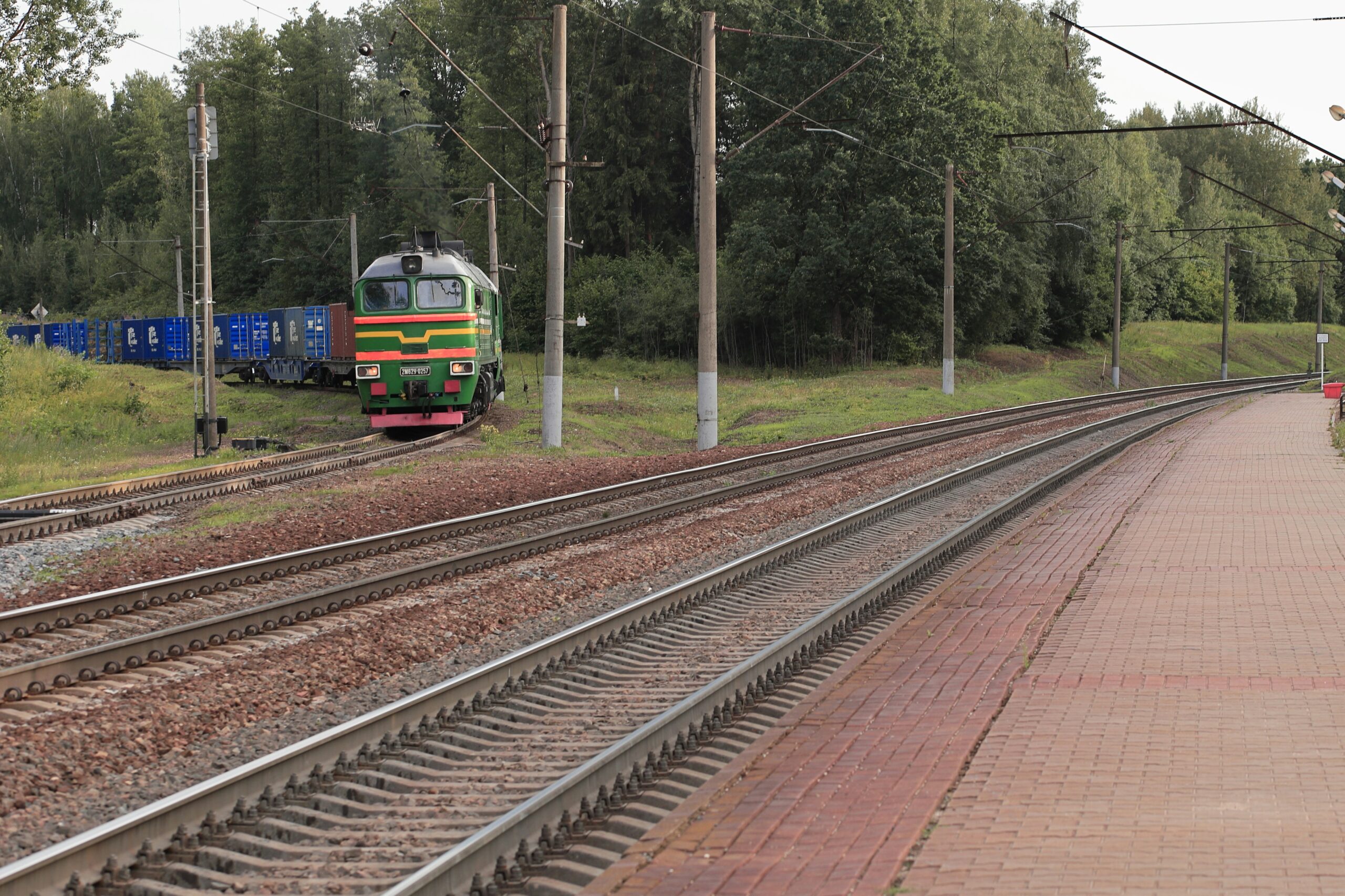Introduction: The Significance of Railway Allocations
Railway allocations in national budgets play a pivotal role in the economic and social development of a country. The railway network is a lifeline, facilitating the movement of goods and people across vast distances. By linking remote areas with urban centers, railways enhance connectivity, thereby promoting regional economic growth and integration. Efficient railway systems reduce transportation costs, making goods more competitive in the market and enabling businesses to thrive.
Moreover, the railways provide a reliable and affordable means of public transportation, which is crucial for daily commuters and long-distance travelers alike. This accessibility fosters social inclusion, particularly for those in rural or underdeveloped regions, ensuring that all citizens can participate in the nation’s economic activities. Consequently, maintaining allocations for railways is not just a matter of infrastructure development; it is a commitment to public convenience and equitable growth.
Investment in railway infrastructure is also a significant driver of job creation, both directly and indirectly. The construction, maintenance, and operation of railway lines require a substantial workforce, providing employment opportunities across various skill levels. Furthermore, improved railway services can stimulate tourism and other industries, generating additional economic benefits.
In the broader context of sustainable development, railways offer an environmentally friendly alternative to road and air transportation. Trains have a lower carbon footprint per passenger or ton of freight compared to other modes of transport, aligning with global efforts to combat climate change. Therefore, consistent railway allocations are essential for advancing green transportation solutions and reducing the environmental impact of national transport systems.
Ultimately, maintaining robust railway allocations in the 2024-25 budget underscores a strategic commitment to fostering economic stability, enhancing connectivity, and promoting sustainable development. The continued investment in railway infrastructure and services is vital for building a resilient and inclusive economy that can meet the needs of its diverse population.
Historical Context: Past Allocations and Their Impact
Over the past few decades, railway budget allocations have varied significantly, reflecting the changing priorities and economic conditions of the times. Analyzing these trends reveals a complex interplay between funding, modernization, and the persistent challenges faced by the railway sector.
In the early 2000s, railway allocations saw incremental increases, focusing primarily on maintaining existing infrastructure and ensuring basic operational efficiency. The 2003-2004 budget, for instance, allocated around $8 billion, emphasizing safety and minor upgrades. While this period did not witness groundbreaking modernization, it laid the groundwork for future enhancements by stabilizing the network’s reliability.
The mid-2000s marked a shift towards modernization and expansion. The 2006-2007 budget earmarked approximately $10 billion, with a significant portion directed towards the creation of new corridors and the introduction of more efficient locomotives. This era saw the inception of the Golden Quadrilateral project, aiming to connect major cities with high-speed rail links. Though ambitious, initial phases faced delays due to funding and logistical challenges.
Entering the 2010s, the focus intensified on technological advancements and passenger amenities. The 2012-2013 budget surged to $15 billion, highlighting projects like the Dedicated Freight Corridors (DFC) and the implementation of real-time tracking systems. The DFCs, in particular, aimed to decongest existing passenger lines by providing exclusive routes for freight, significantly improving overall efficiency. However, these initiatives often encountered hurdles in land acquisition and regulatory approvals, delaying their completion.
In recent years, allocations have increasingly emphasized sustainability and digitization. The 2020-2021 budget, for instance, allocated $20 billion with objectives ranging from electrification of tracks to the adoption of AI for predictive maintenance. This period also witnessed the rollout of semi-high-speed trains, such as the Vande Bharat Express, showcasing a blend of speed, comfort, and energy efficiency.
Despite these advancements, the railway sector continues to grapple with perennial issues like overcrowding, aging infrastructure, and financial viability. Past allocations have undeniably propelled significant projects and modernization efforts, yet the sector’s long-term resilience hinges on consistent and strategic funding.
2024-25 Budget Overview: Key Highlights
The 2024-25 budget has been meticulously crafted to ensure balanced economic growth, with a strong emphasis on infrastructure development. One of the most significant aspects of this budget is the maintenance of the current allocation for railways. The government has allocated $120 billion to the railway sector, underscoring its commitment to enhancing the country’s transportation network. This allocation is in line with the previous year’s budget, reflecting a strategic decision to sustain investment levels in this critical sector.
Several key projects and initiatives have been earmarked for this funding. Among them is the expansion of high-speed rail networks, which aims to connect major urban centers more efficiently. Additionally, there is a concerted effort to upgrade existing railway lines to improve safety and reduce travel time. Modernization of railway stations, introduction of advanced signaling systems, and procurement of new rolling stock are also pivotal components of the budget.
The government’s rationale for maintaining the allocation at its current level is multi-faceted. Firstly, the railway sector is deemed crucial for economic connectivity and regional development. By investing consistently, the government aims to spur industrial growth, facilitate trade, and enhance mobility for millions of citizens. Secondly, the ongoing projects require sustained funding to ensure their timely completion and operational efficiency. Abrupt changes in allocation could disrupt these crucial developments, leading to delays and cost overruns.
Furthermore, the focus on railways aligns with broader sustainability goals. Rail transport is recognized as a more environmentally friendly option compared to road or air travel. By promoting rail infrastructure, the government is also advancing its commitment to reducing carbon emissions and promoting green transportation.
In conclusion, the 2024-25 budget’s consistent allocation for railways underscores the government’s strategic prioritization of infrastructure development. This initiative is expected to yield long-term economic benefits, enhance regional connectivity, and support sustainable growth.
Economic Implications: What Does This Mean for the Economy?
The decision to maintain the railway allocation in the 2024-25 fiscal year holds significant economic implications for various sectors. Firstly, the consistent funding ensures the continued efficiency and reliability of freight transport. Railways are pivotal in moving large quantities of goods across vast distances at relatively low costs. Maintaining allocation can lead to reduced transportation costs for businesses, which in turn can lower the prices of goods, benefiting consumers and enhancing the competitiveness of local industries.
Passenger transport also stands to gain. A well-funded railway system can improve the quality of services, reduce travel times, and enhance safety measures. This can encourage more people to opt for trains over other modes of transportation, which can alleviate road congestion and reduce carbon emissions. Moreover, a robust railway network can facilitate better regional connectivity, making it easier for people to commute for work, education, and other purposes. This enhanced mobility can contribute to regional economic development by making remote areas more accessible and attractive for investment.
In terms of job creation, the sustained railway allocation can generate employment opportunities in several ways. Infrastructure projects, such as the construction and maintenance of railway lines and stations, require a substantial workforce. Additionally, the operational aspects of the railways, including train services, logistics, and administrative roles, can create numerous jobs. The indirect employment generated through increased business activities along the railway corridors is also noteworthy.
Investment opportunities are another critical aspect. Consistent railway funding can signal stability and reliability to potential investors, encouraging investment in related sectors such as logistics, warehousing, and real estate. Improved railway infrastructure can attract businesses that rely on efficient transportation networks, thereby fostering economic growth.
Overall, maintaining the railway allocation in the 2024-25 fiscal year is a strategic decision with far-reaching economic benefits. It supports the freight and passenger transport sectors, stimulates job creation, promotes regional development, and attracts investment, all of which contribute to a more dynamic and resilient economy.
Technological Advancements and Modernization Efforts
The sustained allocation for railways in the 2024-25 budget is set to bolster significant technological advancements and modernization efforts. One of the primary areas of focus is the development and deployment of high-speed trains. These trains, which are capable of operating at speeds exceeding 300 km/h, will not only reduce travel time but also enhance connectivity between major cities. This shift towards high-speed rail is expected to cater to the growing demand for faster and more efficient transportation options.
In addition to high-speed trains, the budget allocation will support the implementation of digital ticketing systems. These systems aim to streamline the ticketing process, reducing the reliance on paper tickets and minimizing the need for physical ticket counters. By enabling passengers to book and manage their journeys through mobile apps and online platforms, digital ticketing enhances convenience and reduces operational costs. The integration of contactless payment options further simplifies the process, contributing to a smoother and more efficient passenger experience.
Another critical aspect of modernization is the development of smart railway stations. These stations will incorporate advanced technologies such as IoT (Internet of Things) devices, AI-powered surveillance systems, and real-time passenger information displays. The introduction of such technologies aims to improve safety, enhance operational efficiency, and provide passengers with up-to-date information regarding train schedules and platform changes. Smart stations will also feature enhanced amenities such as automated baggage handling systems and improved accessibility features for differently-abled passengers.
The benefits of these technological advancements extend beyond efficiency and convenience. Enhanced safety measures, such as advanced signaling systems and predictive maintenance technologies, are expected to significantly reduce the risk of accidents and improve overall railway reliability. Moreover, the modernization efforts will contribute to a more sustainable railway network by optimizing energy consumption and reducing carbon emissions.
Overall, the sustained allocation for railways in the 2024-25 budget underscores a commitment to leveraging technology for the modernization of the railway network. These advancements promise to transform the passenger experience, boost operational efficiency, and enhance the safety and sustainability of the railways.
Environmental Considerations: Sustainable Railways
As the railway sector continues to secure substantial investments in the 2024-25 period, a significant emphasis has been placed on enhancing the environmental sustainability of this critical mode of transportation. One of the primary strategies involves the widespread adoption of electric trains, which offer a cleaner alternative to traditional diesel-powered locomotives. Electric trains contribute to a substantial reduction in greenhouse gas emissions, thus playing a crucial role in the global effort to combat climate change.
In addition to electric trains, the development of green stations is another vital component of the railway system’s sustainability initiatives. Green stations incorporate energy-efficient designs, renewable energy sources such as solar panels, and water conservation measures. These eco-friendly practices not only reduce the carbon footprint of railway operations but also promote a culture of environmental responsibility among passengers and staff.
Moreover, railways are instrumental in alleviating traffic congestion and reducing urban air pollution. By providing a reliable and efficient alternative to road transport, railways can decrease the number of vehicles on the roads, thereby cutting down on traffic jams and associated emissions. This shift from road to rail transport is essential for the creation of more livable cities with cleaner air and less noise pollution.
The continued investment in sustainable railway infrastructure underscores the sector’s commitment to environmental stewardship. This forward-looking approach not only prioritizes the long-term health of the planet but also aligns with broader national and international sustainability goals. As railways evolve to become more eco-friendly, they set a benchmark for other industries to follow, demonstrating that economic growth and environmental sustainability can indeed go hand in hand.
Challenges and Criticisms: Addressing the Concerns
The decision to maintain railway allocation in the 2024-25 fiscal year has not been without its challenges and criticisms. One of the primary concerns revolves around budget constraints. As the government grapples with limited financial resources, questions arise about whether sustaining the railway allocation is the most judicious use of funds. Critics argue that other essential sectors, such as healthcare and education, may be underfunded as a result. These sectors have vocal advocates who contend that their needs should take precedence given their direct impact on public welfare.
Another significant criticism pertains to prioritization. Detractors question whether the current allocation strategy adequately addresses the most pressing needs within the railway sector itself. Some stakeholders argue that there is an overemphasis on expanding infrastructure rather than maintaining existing ones. They point to deteriorating railway stations and outdated technology, suggesting that resources might be better allocated towards modernization and safety improvements.
In addition to these concerns, there is also criticism from environmental groups. They argue that the continued investment in railways does not align with the broader goal of reducing carbon emissions and promoting sustainable transportation alternatives. These groups advocate for a reallocation of funds towards greener technologies and infrastructure to address climate change more effectively.
In response to these criticisms, the government has articulated several strategies. To address budget constraints, officials have emphasized the importance of efficient resource management and potential revenue generation through public-private partnerships. They assert that enhancing railway services can lead to increased economic activity, indirectly benefiting other sectors. Regarding prioritization, the government has outlined plans to balance expansion with maintenance, ensuring that both new projects and existing infrastructure receive adequate attention. Lastly, to address environmental concerns, there are ongoing initiatives to integrate more sustainable practices within the railway sector, such as the introduction of electric trains and investments in renewable energy sources.
Ultimately, while the decision to maintain railway allocation faces valid criticisms, the government’s multi-faceted approach aims to address these concerns while fostering the growth and modernization of the railway sector.
Future Outlook: What Lies Ahead for Indian Railways?
The future of Indian Railways appears promising, particularly with the maintained allocation for the fiscal year 2024-25. This consistent funding underscores the government’s commitment to bolstering national transportation and infrastructure. As we look ahead, several ambitious projects and long-term goals are set to redefine the landscape of Indian Railways.
One of the primary objectives is the modernization of railway infrastructure. This includes the electrification of tracks, which not only aims to reduce carbon emissions but also enhance the efficiency and speed of train services. The introduction of high-speed rail corridors, such as the Mumbai-Ahmedabad bullet train project, is expected to revolutionize passenger travel, significantly reducing journey times and improving connectivity between major urban centers.
Furthermore, the focus on digitalization and smart railway initiatives will play a crucial role in transforming the operational capabilities of Indian Railways. The implementation of advanced signaling systems, real-time tracking of trains, and automated ticketing solutions are anticipated to streamline operations, reduce delays, and enhance passenger convenience. These technological advancements align with the broader vision of creating a more efficient, reliable, and passenger-friendly railway network.
In tandem with infrastructure improvements, there is a concerted effort to enhance freight services. The development of dedicated freight corridors is projected to facilitate faster and more efficient movement of goods across the country. This will not only boost the economic competitiveness of Indian industries but also support the government’s ‘Make in India’ initiative by providing a robust logistical backbone.
Looking forward, Indian Railways is poised to play a pivotal role in the socio-economic development of the nation. By addressing key challenges such as capacity constraints, safety concerns, and environmental sustainability, these long-term projects and goals are set to transform the railway sector. The alignment of these initiatives with the overall vision for national transportation and infrastructure development underscores a future where Indian Railways continues to be a cornerstone of progress and connectivity.



